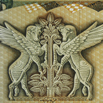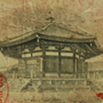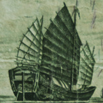|
|
|
|
OLD HISTORICAL BANKNOTES |
|
|
|
|
|
|
|
|
|
|
|
|
|
The earliest promissory notes would have been made of vellum, parchment or some kind of animal skin. Paper was virtually unknown outside China until the middle of the 12th Century and came to Europe via Arabia and North Africa, Herault, in France, established in 1189, claims to have had the first paper mill in Europe.
In England the earliest kind of paper money consisted of notes issued by goldsmiths as receipts of valuables deposited by merchants in their vaults. These were used as promissory notes and accepted as legal tender following an exchequer order by King Charles II in 1965.
The first paper money to be issued in Europe was in 1661. The Stockholder Bank of Sweden issued credit notes (Kreditivse dlar) in place of the copper currency.
Paper money became popular in England and France at the end of 17th Century. The earliest American money were issued by Massachusetts Bay Colony in December, 1690.
Canada has a long and interesting history of paper money; indeed its paper money is slightly older than the U.S. In 1685, the French authorities failed in supplying money to their troops stationed in Canada; instead playing cards, on which the Governor signed a promise to pay the bearer a sum of money in coin when supply of specie arrived. |
|
|
|
|
|
|
|
|
|
|
|
|
|
|
|
|
|
|
|
|
|
|
|
|
|
|
|
|
|
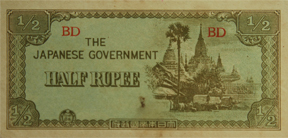 |
|
WWII JAPANESE INVASION MONEY
The Japanese Invaded Burma in January 1942. They conquered Mandalay on 21 May 1942 forxing the British to retreat into India. The Japanese held Burma until the second Allied campaign of 1944; although an official surrender did not take place until August 1945. In 1942 the Japanese issued paper script currency of 1, 5 and 10 cents and 1/4, 1/2, 1, 5 and 10 Rupees. |
|
|
|
|
|
|
|
|
|
|
|
|
|
|
|
|
|
|
|
|
|
|
|
|
|
|
|
|
|
|
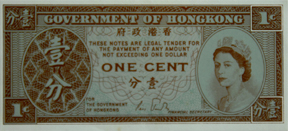 |
|
SMALLEST DENOMINATION NOTE OF HONG KONG
The smallest (42 X 71 mm) & lowest denominated (1 cent) bank note of Hong Kong was initially released in 30th May 1941. It was printed by M/s. Noronha & Company Limited. This bank note was issued by the government of Hong Kong to provide small change because of a lack of coinage brought on by the Second World War. After the Japanese takeover of Hong Kong the issue was replaced by the Japanese Military Yen. |
|
|
|
|
|
|
|
|
|
|
|
|
|
|
|
|
|
|
|
|
|
|
|
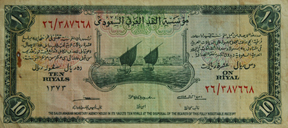 |
|
HAJ PILGRIM RECEIPTS
These �Haj Pilgrim Receipts� for 10 Riyals were issued in 1953 for the convenience of pilgrims in Saudi Arabia, and to relieve them from carrying heavy metal coins during the Haj season.
These Pilgrim Receipts were initially intended for use by pilgrims. However, they became widely accepted in Saudi Arabia and largely replaced Silver Riyal coins in major financial transactions. Consequently, the Monetary Agency began issuing regular banknotes for 1, 5, 10, 50 and 100 Riyal in 1961, with the Pilgrim Receipts being demonetized in 1964.
|
|
|
|
|
|
|
|
|
|
|
|
|
|
|
|
|
|
|
|
|
|
|
|
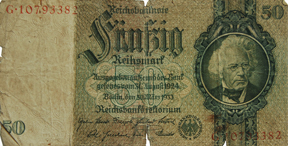 |
|
NAZI GERMANY�S REICHMARK
The Reichsmark (RM) was the currency issued in Germany from 1924 until June 20, 1948. It was introduced as a permanent replacement for the Papiermark (Paper Mark) due to the 1920s German inflation which had reached its peak in 1923.
The first Reichsmark banknotes were introduced by the Reichsbank and state banks such as those of Bavaria, Saxony and Baden. The first Reichsbank issue of 1924 came in denominations of 10, 20, 50, 100 and 1000 Reichsmark and was replaced in June 1948.
|
|
|
|
|
|
|
|
|
|
|
|
|
|
|
|
|
|
|
|
|
|
|
| |




